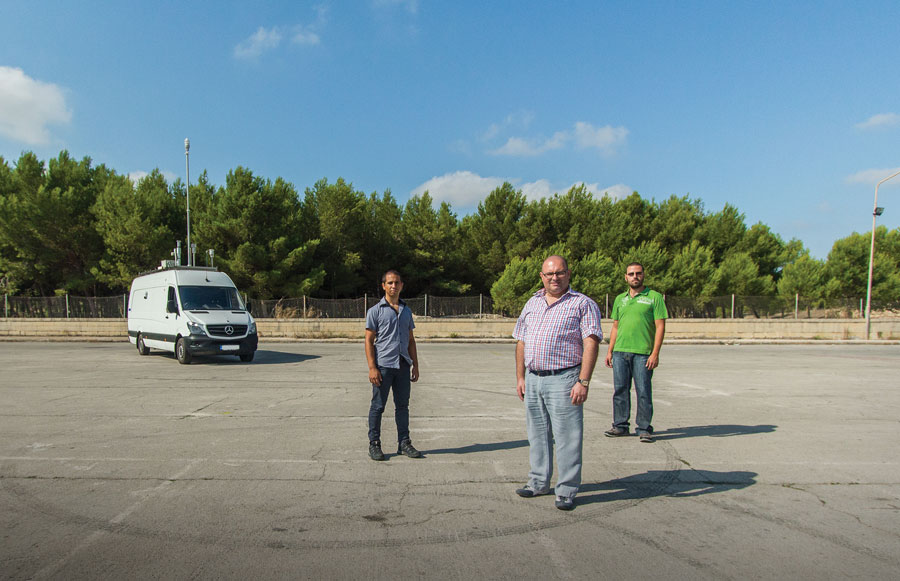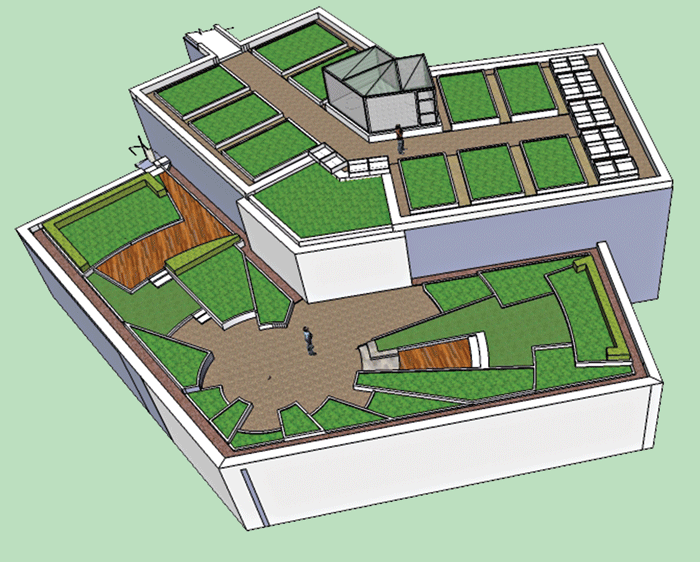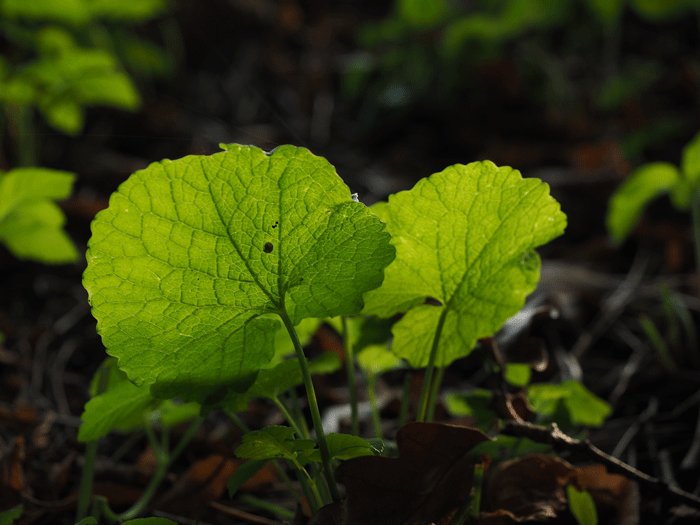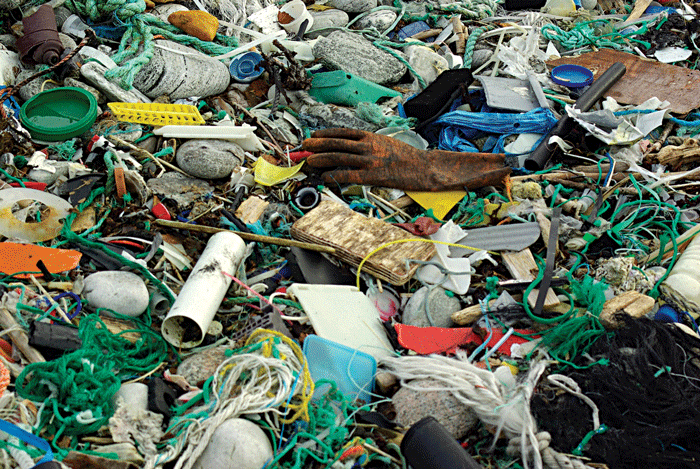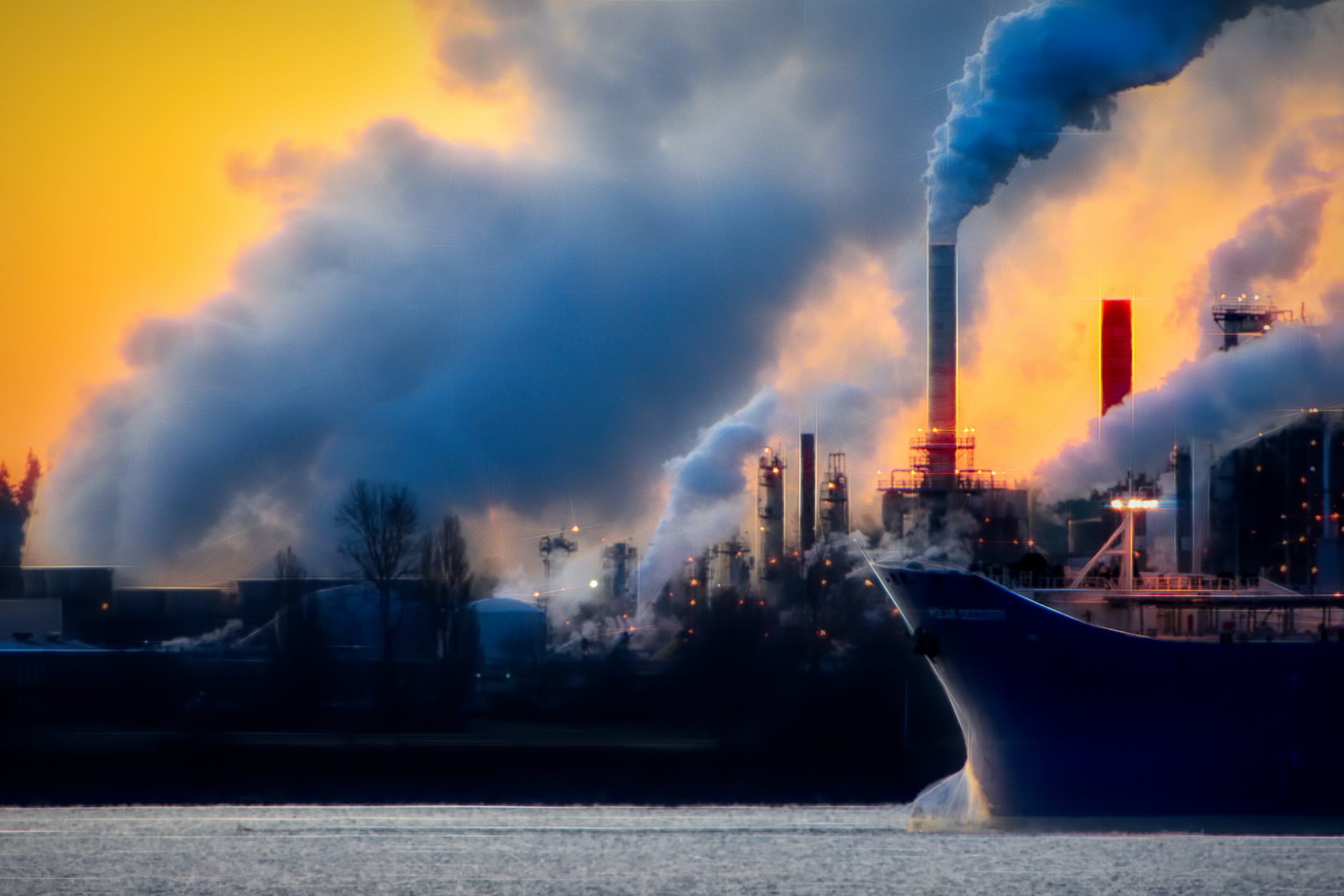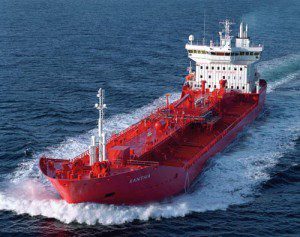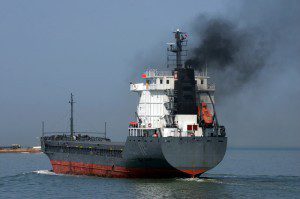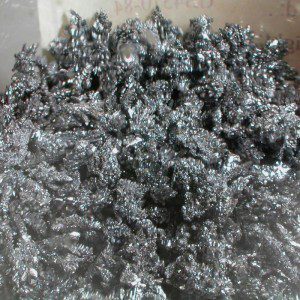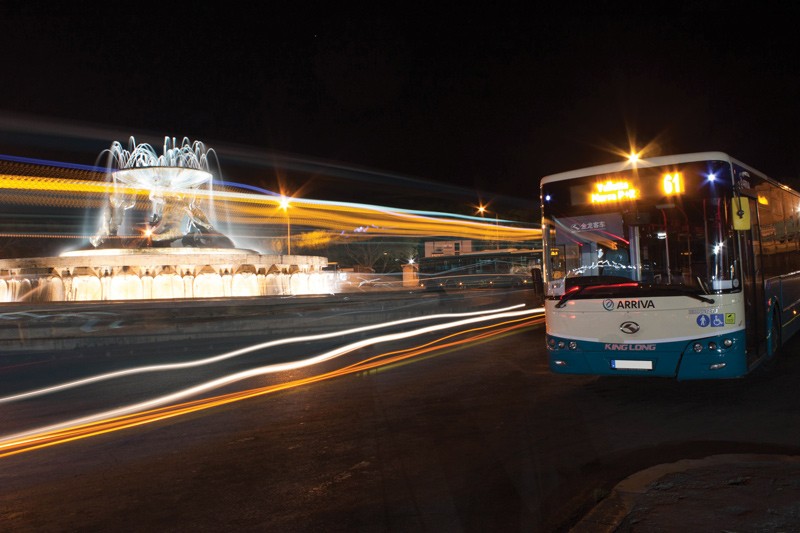Green Roof Malta
In Malta, buildings cover one third of the Island, leaving greenery in the dirt track. Green roofs are one way to bring plants back to urban areas with loads of benefits. Antoine Gatt, who manages the LifeMedGreenRoof project at the University of Malta, tells us more.
Cleaning Contaminated Land with Plants

Carmen Sanchez Garcia
Soil sustains wildlife, landscapes, crops, forests, and air and water quality. Our survival and development depends on soil. However, a large amount of metals is being released daily into the environment through household waste, agricultural practices, and industrial activity.
Soil acts as a ‘sink’ for pollution, and depending on the soil’s chemical conditions, metals may persist there for long periods of time, posing a risk for humans and ecosystems. Maltese soils have a high concentration of lead, zinc, and copper. At high concentrations, these metals are harmful to many forms of life and can lead to a host of diseases including cancer. Carmen Sanchez Garcia (supervised by Dr Anthony Sacco) studied how to reduce the level of these metals in Maltese soils using plants instead of conventional methods.Continue reading
A Greener Chemical Pot
John Gabarretta discusses the elegance of chemistry though its reactions.
Let us fish4tomorrow
All over the world, governments and stakeholders are trying to cope with overfishing. Overfishing is when too much fish is caught which leads to an overall degradation of the marine ecosystem. It is the non-sustainable use of ocean resources. Words by J.D. Farrugia
Continue reading
Pollution around Malta’s Sea
Research by Nicolette FormosaContinue reading
Shipping’s Black Cloud
Over summer Dr Edward Duca visited the beautiful Island of Gozo, meeting Prof. Ray Ellul and his team based in Xewkija and the Giordan Lighthouse. Gozo is a tourist hotspot because of its beautiful landscapes, churches, and natural beauty. These same reasons attracted Ellul to obtain baseline readings of air pollutants; human effects should be minimal. Their equipment told them a different story.
They’re very big, anything from 10,000 tonnes to 100,000 tonnes,’ atmospheric physicist Prof. Ray Ellul is telling me about the 30,000 large ships his team observed passing between Malta and Sicily over a year. This shipping superhighway sees one third of the world’s traffic pass by carrying goods from Asia to Europe and back.
The problem could be massive. ‘A typical 50,000 tonner will have an engine equivalent to 85 MW,’ Malta’s two electricity plants churn out nearly 600 MW. You only need a few of these to rival the Islands’ power stations.
Ellul continues, ‘this is far far worse. We are right in the middle of it and with winds from the northwest we get the benefit of everything.’ Northwest winds blow 70% of the time over Malta and Gozo, which means that around two thirds of the time the pollutants streaming out of these ships are travelling over Malta. Even in Gozo, where traffic is less intense, air quality is being affected.
“Ships currently use heavy fuel oil with 3.5% sulfur; this needs to go down to at least 0.5%. The problem is that it doubles cost”
Malta is dependent on shipping. Malta’s Flag has the largest registered tonnage of ships in Europe; shipping brings in millions for Malta. We cannot afford to divert 30,000 ships to another sea. Yet Malta is part of the EU and our politicians could ‘go to Brussels with the data and say we need to ensure that shipping switches to cleaner fuels when passing through the Mediterranean.’ Politicians would also need to go to the Arab League to strike a deal with North Africa. Ships currently use heavy fuel oil with 3.5% sulfur; this needs to go down to at least 0.5%. The problem is that it doubles the costs. Malta’s battle at home and abroad won’t be easy, but the Baltic Sea has already taken these measures.
German Dreams
The research station in Gozo is a full-fledged Global Atmospheric Watch station with a team of five behind it. Now it can monitor a whole swathe of pollutants but its beginning was much more humble, built on the efforts of Ellul, who was drawn into studying the atmosphere in the 80s when he shifted his career from chemistry to physics.
In the early 90s the late rector, Rev. Prof. Peter Serracino Inglott, wanted the University to start building some form of research projects. ‘At that time, we knew absolutely nothing about what was wrong with Maltese air and Mediterranean pollution,’ explained Ellul. Building a fully fledged monitoring station seemed to be the key, so Ellul sent ‘handwritten letters with postage stamps’ to the Max Planck Institute in Mainz. Nobel prize winner Paul J. Crutzen wrote back inviting him to spend a year’s sabbatical in Germany, but their help didn’t stop there. ‘He helped us set-up the first measuring station, [to analyse the pollutants] ozone, then sulphur dioxide, then carbon monoxide. That’s the system we had in 1996 — […] 2 or 3 instruments.’
They lived off German generosity until 2008 when Malta started tapping into EU money. After some ERDF money and an Italy-Malta project on Etna called VAMOS SEGURO (see Etna, THINK issue 06, pg. 40), Ellul now manages a team of five. In homage to his early German supporters he has structured the research team around a Max Planck model — ‘one of the best systems in the World for science’.
Paradise Lost?
Getting data about ships is not easy. ‘It is very sensitive information and there is a lot of secrecy behind it,’ explains Ing. Francelle Azzopardi, a Ph.D. student in Ellul’s team. It is also very expensive. Lloyd’s is the World’s ship registry that tracks all ships, knowing their size, location, engine type, fuel used — basically a researcher’s dream. However, they charge tens of thousands. Ellul took the decision that they gather all the data themselves.
After 2004, all international ships above 300 gross tons need to have a tracking device. Automatically, these ships are traced around the world and anyone can have a peek on www.marinetraffic.com (just check the traffic around Malta). Every half hour the team’s administrator Miriam Azzopardi saves the data then integrates it into the Gozitan database. This answers the questions: where was this ship? which ship was it? how big is it? Easy.
“Ship emission expert James Corbett calculates that worldwide around around 60,000 people die every year due to ship emissions”
If only! The problem is that the researchers also need to know fuel type, engine size, pollution reduction measures, and so on. Then they would know which ship is where, how many pollutants are being emitted, and how many are reaching Malta and Gozo. To get over this hurdle, they contacted Transport Malta (more than once) to ask for the information they needed. ‘About 50% of the ships passing there [by us or Suez are] Malta registered,’ explained Ellul. With this information in hand they could put two and two together. They could create a model for ship emissions close to the Islands and use the model to get the bigger picture.
Enter their final problem: how do you model it? Enter the Finns. Ing. Francelle Azzopardi travelled to the Finnish Meterological Institute. They had already modeled the Baltic Sea, now they wanted access to the Maltese data, in return the Maltese team wanted access to their model called STEAM.
STEAM is a very advanced model. It gathers all the ships’ properties like engine power, fuel type, and ship size. This is combined with its operating environment including speed, friction, wave action, and so on. STEAM then spits out where the team should be seeing the highest pollution indicators. Malta was surrounded.
Apart from the model, the team have seen a clear link between ships and pollution. At the Giordan lighthouse they can measure a whole host of pollutants sulphur dioxide, various nitrogen oxides, particulate matter, black and brown carbon levels, ozone, radioactivity levels, heavy metals, Persistent Organic Pollutants (POPs) and more. When the wind blows from the Northwest, they regularly show peaks of sulfur dioxide, nitrogen oxides, carbon dioxide, carbon monoxide, hydrocarbons which are all indicative of fossil fuel burning either from ships or Sicilian industry. They also picked up relatively high levels of heavy metals especially Vanadium, a heavy metal pollutant. Such metals are more common in heavy fuel oil used by ships.
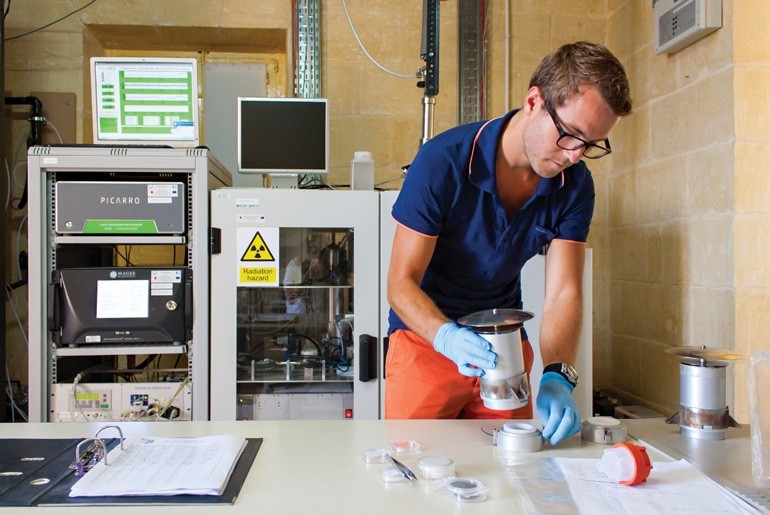
Alexander Smyth is the team’s research officer who spends three months in Paris every year analysing filters that capture pollutants from the atmosphere. Two different filter types are placed in the Giordan Lighthouse. One filter for particles smaller than 2.5 micrometers and another filter for particles around 2 to 10 microns. ‘With the 2.5 filter we can see anthropogenic emissions or ship emissions because they tend to be the smaller particles. The filters are exposed for three to four days, and then they need to be stored in the fridge. Afterwards, I take them to Paris and conduct an array of analyses,’ continued Alexander. The most worrying pollutant he saw was Vanadium.
Vanadium is a toxic metal. When inhaled, ‘it can penetrate to the alveoli of the lungs and cause cancer, a worst case scenario,’ outlined Alexander. It can also cause respiratory and developmental problems — none are good news. The only good news is that ‘they are in very small amounts’. Quantity is very important for toxicity, and they are seeing nanograms per cubic metre, a couple of orders of magnitude more are needed to cause serious problems. No huge alarm bells need to be raised, although Vanadium does stick around in bones and these effects still need more studies.
Vanadium seems to be coming from both Malta and shipping traffic. ‘The highest peaks of vanadium are from the south [of Malta, but the largest number of times I detected came] from the northwest, [from ships],’ said Smyth. ‘There is a larger influence from ships compared to local pollution at the Giordan lighthouse.’
Vanadium is not the only pollutant that could be affecting the health of Maltese citizens. Smyth also saw lots of different Persistent Organic Pollutants (POPs). At low concentrations these compounds can affect immunity leading to more disease, at higher concentrations they can lead to cancer. The local researchers still need to figure out their effect on Malta’s health. Francelle Azzopardi also saw peaks of sulfur dioxide and nitrogen oxides. No surprise here as shipping is thought to cause up to a third of the World’s nitrogen oxides and a tenth of the sulfur dioxide pollution.
Inhaling high levels of sulfur dioxide leads to many problems. It is associated with respiratory disease, preterm births, and at very high levels, death. It can affect plants and other animals. Nitrogen oxides also cause respiratory disease, but can also cause headaches, reduce appetite, and worsen heart disease leading to death. These are pollutants that we want to keep as low as possible.
Ship emission expert James Corbett (University of Delaware) calculates that worldwide around 60,000 people die every year due to ship emissions. Most deaths come from the coastlines of Europe, East Asia, and South Asia. Shipping causes around 4% of climate change emissions. This is set to double by 2050. In major ports, shipping can be the main cause of air pollution on land.
Another unexpected pollutant was ozone, normally formed when oxygen reacts with light. Yet the Giordan lighthouse was not the first to start measuring this gas. It all started with the Jesuits, scholarly catholic monks.
Monks at work
A lot of time is needed to see changes in our atmosphere. Researchers need to gather data over years. To speed up the process, Ellul was hunting around Malta and Gozo for ancient meteorological data about the Islands’ past atmosphere.
He was tipped off that there were still some records at a seminary in Gozo. ‘We expected to find just meteorological data and instead we also found ozone data as well. It was a complete surprise and a stroke of very good luck. We were able to find out what happened to ozone levels in the Mediterranean over the last hundred years.’
Jesuit monks meticulously measured ozone levels from 1884 to 1900. They analysed them seeing that the concentration of ozone was a mere 8 to 12 parts per billion by volume, ppbv. Ellul compared these to a 10-year study he conducted from 1997 to 2006. ‘We measure around 50ppb on average throughout the year,’ which is nearly 5 times more over a mere 100 years.
The situation is quite bad for Malta. In the past, the minimum was in summer and the maximum in winter and spring. Now, this has reversed with spring and summer having the highest ozone levels because of the reactions between hydrocarbons and nitrogen oxides. These come from cars, industry, and ships.
Over the Eastern Mediterranean ozone levels have gradually decreased. Over Malta, in the Central Mediterranean, they remained the same. Ellul thinks this could be because of an anticyclone over the central Mediterranean bringing pollutants from Europe over Malta and Gozo. The levels of ozone in Malta and Gozo are the highest in Europe, and it could be mostly Europe’s fault. Our excessive traffic doesn’t help.
Ozone can be quite a mean pollutant. While stratospheric ozone blocks out harmful UV rays, low-level ozone can directly damage our health or react with other pollutants to create toxic smog. It’s been known to start harming humans at levels greater than 50 ppbv. It inflames airways causing difficulty breathing, coughing and great discomfort. Some research has linked it to heart attacks — a pollutant not to be taken lightly.
Over those 10 years Ellul and his team saw 20 episodes in summer where ozone levels exceeded 90 ppbv. Some were during the night, unlikely to be of local origin but due to transport phenomena in the central Mediterranean and shipping. Ellul does nod towards the possibility of air recirculation from Malta. The atmosphere is a complicated creature.
Plants also suffer from ozone. Above 40 ppbv yield from fields decreases. Gozo is definitely being affected; we could be producing more.
The devil is in the details
Ellul and his team have found a potentially big contributor to the Islands’ pollution. This would be over and above our obvious traffic problem. Yet Ellul admits that ‘there is no particular trend, it’s too short a time span. What it tells us is that what we think is a clean atmosphere is not really a clean atmosphere at all. The levels are significant.’ Azzopardi honestly says ‘I can [only] give you an idea of what is happening’.
The team needs to study the problem for longer. It needs some statistics. Clearly they see a link between ships passing by Malta and peaks in pollution levels, but the Islands need to know if shipping pollution levels beat industry, traffic, or Saharan dust. What is ships’ contribution to Malta’s health problems?
When the team knows the extent of pollution, they can see whether they go above European standards. Ozone already does, and likely to be due to pollution from the European continent. If they can extend it to a whole host of other pollutants that skyrocket above European standards due to ship traffic, then ‘our politicians,’ says Ellul, can go to Brussels to enforce new legislation. That could control Mediterranean shipping traffic to clean up our air. At least it would solve one significant problem that Malta cannot solve on its own.
The main problem is economic. A ship can be made greener by reducing its sulfur fuel content. Low sulfur fuels are double the price of the bunker fuel they currently use. New legislation would need enforcement, which is costly. Ships could also be upgraded, again at a price. Passing these laws is not going to be easy.
Ships have been a pollution black hole for a while. The fuels ships burn contains 3,000 times more sulfur than cars are allowed to burn. Quite unfair. Going back to Corbett’s figures estimating European deaths at 27,000, the current rise in shipping pollution could end up killing hundreds of thousands if not millions before new legislation is enforced. Now that would be truly unfair.
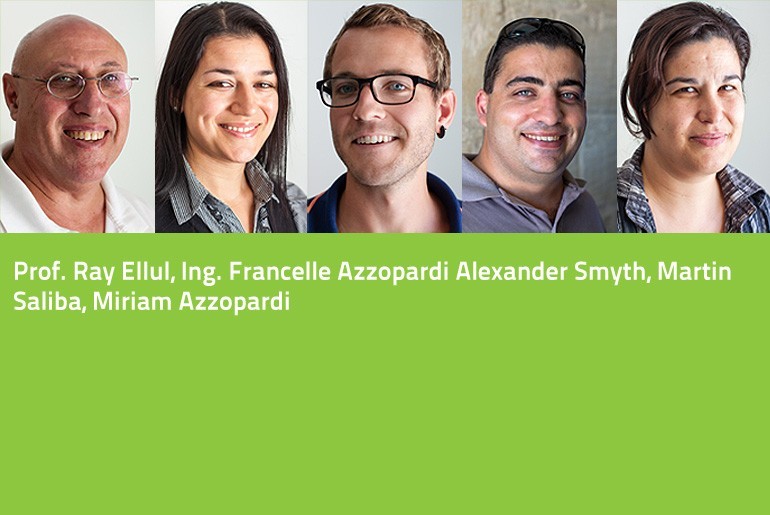
Future-Safe Malta
Words by Prof. Saviour Formosa
“Extreme weather leaves Mediterranean countries picking up the pieces. Egypt and Lebanon were the hardest hit with over 1.2 million people displaced overnight. Malta didn’t fare much better. The authorities have reported over 2,300 dead or missing, thousand injured and 74,000 persons displaced. Power cuts have been reported all over the island after Turbine Two tripped at the Delimara Power Station. Enemalta have not replied. The islands have taken a major blow to their infrastructure. Debris has been reported 1 km away from the coasts. The AFM and emergency responses were immediately dispatched and are starting to clear arterial roads. Insurance companies are still counting the costs. Valletta, Floriana and parts of Isla were protected from the storm surge by centuries-old Knight’s fortifications. The following localities have been affected: Birgu, Bormia, Kalkara, Marsa, Gzira, Msida, Pietà, San Giljan, Sliema, Ta’Xbiex, Xghajra, Birzebbuga, Marsascala, Marsaxlokk, Xlendi and Marsalforn. “
The above cutout could become reality if a Category 3 storm lashes Malta with 178 to 208 km per hour winds. The chances are minimal but too probable to ignore, since in 1995 a similar storm formed close to the Maltese Islands followed by others in 1996, 2006, and 2011. Below are two scenarios that compare Malta as it currently stands against an island with a solid disaster management plan.
[ SCENARIO 1 – AN UNPREPARED ISLAND]
The emergency forces have been inundated with calls for help and have few plans to operate a workable rescue effort. Key personnel were lost at home or while rushing to the scene, since the infrastructure has been knocked out, paralysing the island. Power surges or power cuts have caused fires all over the Islands creating an apocalyptic scenario. With the storm still raging, the lack of a back-end ICT network has rendered communication near impossible.
[ SCENARIO 2 – THE IDEAL SCENARIO]
A fleet of small aerial drones is monitoring the disaster. The authorities are using them to identify the hardest hit areas and map out corridors that allow access on the ground. Emergency vehicles are being deployed safely. Services will be redeployed after safety assessments and clearing of the main infrastructure. Paramedics, NGO rescue teams, and armed forces help move people to safer grounds and carry out rescue operations. Community buildings on higher ground are converted into temporary shelters. In turn, decision-makers are kept informed using an Emergency Room for effective relief.Continue reading
A Greener Malta
The facts are clear: Malta has a challenge. It needs to build up a 10% electricity generation from renewables by 2020. Beyond that, it needs cleaner air, cleverer homes, and a consistent power source for its people and economy. The big question is how can we enjoy Malta’s newly won benefits of the developing world without compromising our environment? This challenge motivates researchers worldwide. Malta is doing its bit in environmental engineering: developing green skies, green energy, green homes, and the opportunity for a green Malta.
Greener Skies
Nearly 100,000 commercial flights take off every day worldwide causing 2% of man-made carbon dioxide (CO2) emissions per year. In Malta, over one million tourists visit each year and flights are critical in connecting an island to the outside world. How can we address Malta’s economic needs with a growing public concern on airplane pollution, noise, and contribution towards climate change? A €1.6 billion Clean Sky project funded by the European Commission is trying to make this apparent conflict work. It brings together major European industrial partners, research establishments, and academia to develop breakthrough technologies for the air transport industry. In Malta, the Department of Electronic Systems Engineering is optimising flight paths known as trajectories.
The idea: reduce a plane’s flight path, reduce the time it is airborne, lower CO2 release. Computer algorithms can find a plane’s best trajectory and minimise air pollutants and noise. Malta is handling a part of the software development to optimise flight paths. The purpose of the software platform being developed by the Maltese team is to allow partners to bring together their optimisation models and tools. This will allow the international consortium to solve the complex algorithms that come with flight trajectory problems.
Another project called Clean Flight is tackling local airplane flight paths. Current flight trajectory calculations are based on lowering costs. This does not necessarily mean that these trajectories provide the least pollution for our skies. Clean Flight’s approach is to lower flight costs by being green. Usually these two qualities match: burn less fuel, spend less, pollute less. Commercial aircrafts should have new flight paths for Malta.
Harnessing the winds
Every time we switch on an appliance at home or at our workplace we are consuming energy. And energy means money and pollution. Pollution can be nullified by using renewables. Denmark, famous for windmills, has invested heavily in wind energy. By 2011 it generated around 26% of the total electricity demand through wind farms. Denmark also has one of the lowest electricity prices in the EU.
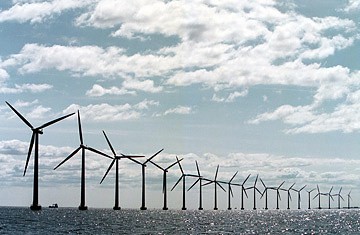
Wind energy’s success has come with a backlash. The rapid increase in land use has caused public outcry on despoiling views, animal activists are worried about bird deaths, and increased pressure on limited land availability. In Malta land is of premium value. Green and open spaces are limited. Out at sea these problems could disappear and floating offshore wind structures may provide accessibility to deeper waters. Deeper seas have other plusses. Out there, the wind speeds are higher and more consistent, which makes electricity generation more realistic. The flipside is the expense in sending the precious electrical energy back to shore to power homes.
Floating wind turbines may be the key to fulfil Malta’s renewable energy targets. Malta has agreed to a 10% electricity generation from renewables by 2020 with the EU. If the country fails to meet its target it will be smacked with a huge fine.To give more opportunities for the government to reach this target the Faculty of Engineering is pushing new research into wind energy. There are major differences between floating and fixed offshore structures. Waves cause ever changing stresses on the turbine’s structure and bobbing movement could change the turbine blades’ aerodynamics that reduces power output.
The researchers at the Faculty’s Fluids Lab are testing a model floating wind turbine. Till now, the experiments have examined the change in power experienced by a wind turbine’s rotors when bobbing up and down on waves. The data has been inputted into a computer model to simulate large-scale floating wind farms. By simulating the air flow the drop in generation can be better understood. The simulations are based on the application of free-wake vortex methods. Since the air flow changes with the oscillation of the platform and therefore with time, these methods are capable of capturing the changes in the wake formed by the rotor.
Large wind farms face the problem of having generators and gearboxes mounted on each turbine at great cost. Instead the energy generation could be centralised, with individual turbines pumping seawater towards a central station which makes use of a positive displacement pump. This concept would mean that a centralised hydroelectric power station could be located on our shores.
Replacing every wind turbine’s gearbox and generator with a hydraulic pump offers many advantages. It reduces expense, by minimising the number of moving parts’ maintenance costs, and make a lighter turbine. Wind farms that pump water could also be easier to combine with wave energy, energy storage systems, and reverse osmosis plants that use up a big chunk of Malta’s electricity to make drinking water from the Mediterranean.
“Floating wind turbines may be the key to fulfill Malta’s renewable energy targets”
The only way is up
Normally we think of wind turbines as a tall central structure with a generator on top and propeller-style blades powering everything. But this is not the only possibility. Blades can spin around the turbines’ central structure doing away with expensive maintenance costs and complex gears to turn the blades into the wind. These Vertical Axis Wind Turbines (VAWTs) do not need to be oriented into a specific wind direction. Their problem is a requirement for higher wind speeds before they start to spin.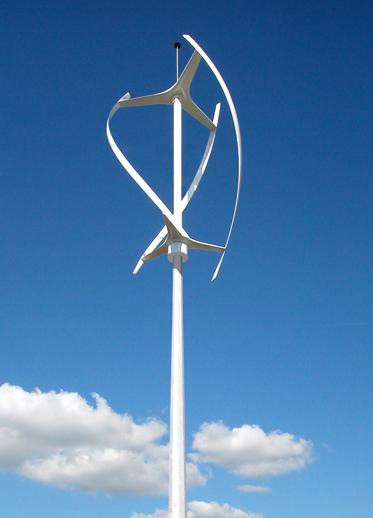
Dr Ing. Pierluigi Mollicone is coordinating a project that is coming up with new design concepts for this type of wind turbine. By working with both local academics and industrial players, a state-of-the-art design has to improve both the starting speed and the capability of controlling the turbine at varying wind speeds. Starting off from a conceptual idea, the design is then detailed and developed in the first step to make a wind turbine. The computer design then needs to be tested for aerodynamics and structural integrity—does it spin well and can it take a beating? The computational model then needs to be translated into a real world structure and tested in a wind tunnel, with further experiments back and forth needed to come up with a new wind turbine.
Malta’s very own windmill: restarted
The Raddiena or Chicago windmill is a well-known sight in rural Malta. These windmills harness the winds to draw water from the water table and irrigate fields. In 2001, 300 windmills were listed across Malta and Gozo. Unfortunately, the introduction of electricity has led farmers to abandon this clean source. Many windmills are gradually deteriorating. Dr Ing. Tonio Sant (Department of Mechanical Engineering) and his team are developing a new wind turbine concept to replace these badly damaged Chicago windmills. Together with the Ministry for Resources and Rural Affairs they are upgrading the rotor design structure’s aerodynamics to improve water-pumping efficiency. At the same time, the researchers want to maintain the original visual appeal of a multi-bladed rotor. The turbine will also produce electricity and be grid-connected. It won’t just pump up water but also provide clean energy.
Green Homes
Malta is covered in houses. Covering their roofs with PV (photovoltaic) panels is a way we could all help by making renewable energy. In the past five years, Malta has seen a drastic increase in PV panel use. Electricity generation is shifting from a centralised power station to our homes. Distributed generation is characterised by small-scale electricity generation, deployed near the point of use: our homes.
Currently our national grid cannot handle large PV installations. The stability of the grid may be compromised leading to power outages. And we all know what being in the dark for a few hours means. No Internet, no TV, no cold drinks in summer. The storage of electric energy can be used to balance the generation and consumption demands for a single household or company. Excess energy generated during periods of high generation can be stored. This stored energy can then be used when supply cannot meet demand, perhaps when using several heaters on a cloudy day.
Microgrids can solve these challenges. These grids are low voltage (electrical distribution within a home) or medium voltage (electrical distribution within a neighborhood) electrical distribution networks designed to supply small electrical loads. They are needed to hook up PV panels to a small community like a housing estate, university, schools, shopping mall, or industrial area. They consist of three major components. The homes equipped with PV or wind turbine installations, systems to store the energy generated, and other electricity users connected to the grid.
Microgrids generate energy near where it will be used. This increases reliability and reduces losses due to long transmission lines. Microgrids can also be used to provide electricity in remote locations unconnected to a main grid. Researchers are developing new methods to reliably operate and control microgrids across an island. They want to implement a low voltage microgrid capable of reliable operation that is connected to the national grid.
Many households have PV panels and solar water heaters. Local researchers are combining the two systems. For a sunny country like Malta, such a system makes perfect sense. One major advantage of a combined system is efficient conversion of concentrated solar energy to heat energy. The homeowner can then flip a switch to either generate electricity or heat water.
A parabolic trough, a curved surface, is used to focus the sun’s rays onto a fluid. The heated fluid can reach temperatures of up to 300°C. Hot enough to power a stirling engine used to generate electricity or pump water.
Greener Seas
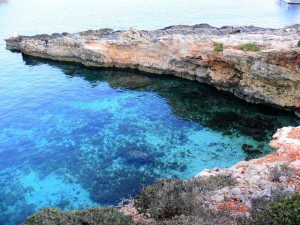
The Mediterranean has over 150 million people living on its coast. A quarter of a million fishermen live off its fish. Even closer to home, the sea around Malta sees one third of the world’s shipping. The only way this sea can survive is by knowing how much we are polluting and exploiting it by monitoring it. Then the effect needs to be evaluated and the situation managed by administrators around the Sea to balance development and environmental health.
A study that will help gather information about maritime traffic across the Straits of Sicily is being carried out by the Department of Mechanical Engineering and the University of Catania. By quantifying the emissions produced, they will find out the consequences of these emissions on the local plant and animal life. The project aims at supporting the monitoring of pollution at sea in the Straits of Sicily and so contributing to future legislation at national and European level.
Engineers designed a towfish that will be used to monitor a number of pollutants in the Mediterranean Sea. A towfish is an underwater platform that is towed behind a surface boat and can reach a depth of 50m. The towfish will be equipped with an HD camera that can take images of zooplankton and phytoplankton in order to study colonies that exist in the Straits of Sicily. Another HD camera will be used to monitor swarms of jellyfish and their location.
A Green Malta
Pollution bothers everyone with dirty atmospheres and smelly odours. Pollution also makes us sick and causes many health problems including birth defects, and burdens health institutes. We all have a role to play to protect and safeguard our environment. Whether it is our skies, seas, or our homes we all have to do our part. A greener Malta means a greener future for all of us.
In 30 years’ time the electric energy we use in our homes and at the workplace will come mainly from renewable energy sources. We will all be driving electric vehicles. The familiar black clouds of smoke from dirty engines will be a thing of the past. But these advances in technology will not be possible without government funding, industrial collaboration, and the sweat of engineers and researchers to find exciting solutions to power nations and our green homes.
Watch more here: https://www.youtube.com/watch?v=VwCNHvD2gqY

